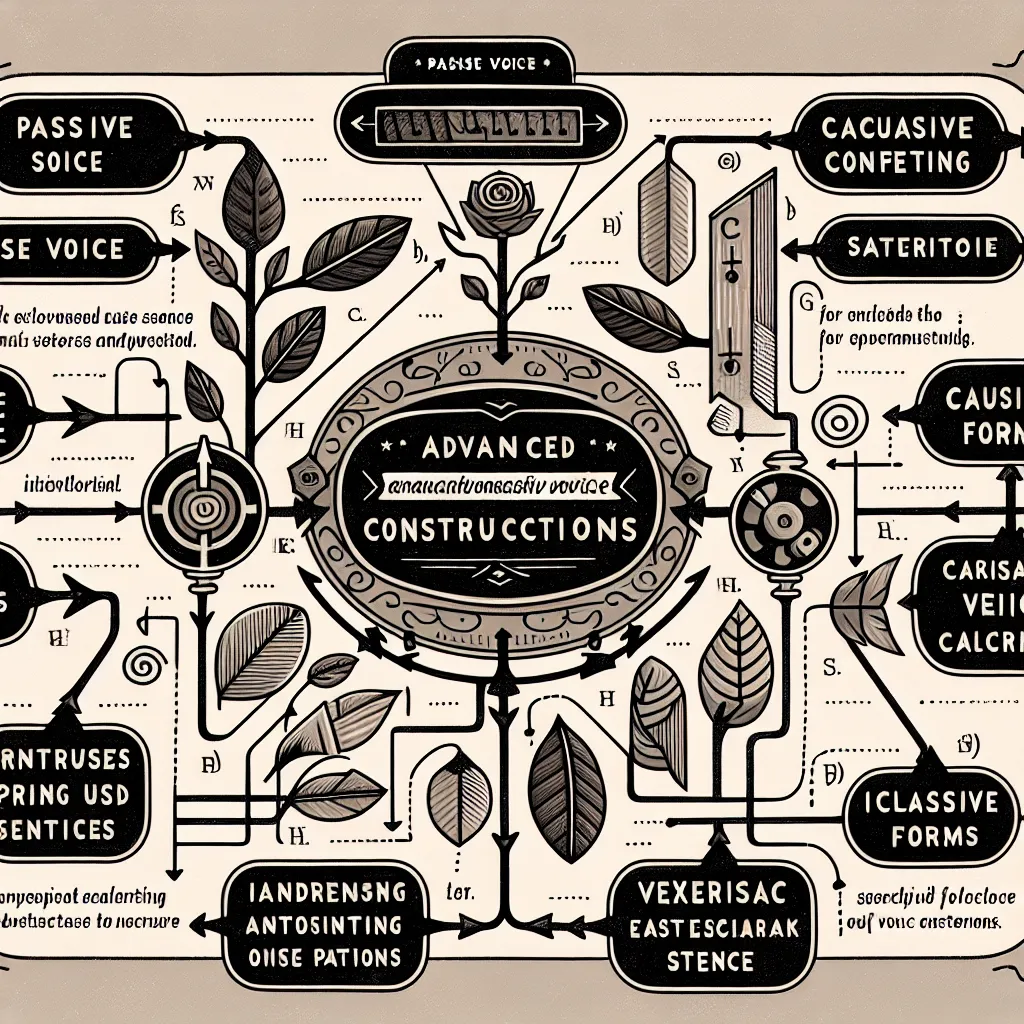Welcome to our in-depth guide on How To Use Advanced Voice Structures in English. Whether you’re preparing for the IELTS exam or simply looking to enhance your language skills, mastering these complex grammatical structures can significantly improve your communication abilities. In this article, we’ll explore various techniques and provide practical examples to help you incorporate advanced voice structures into your English usage.
Understanding Advanced Voice Structures
Advanced voice structures in English refer to sophisticated ways of expressing ideas that go beyond basic sentence construction. These structures include passive voice, causative forms, and various types of inversions. Mastering these forms allows you to convey nuanced meanings and adapt your language to different contexts and registers.
 Advanced English Voice Structures
Advanced English Voice Structures
Why Are Advanced Voice Structures Important?
- Flexibility in Expression: They allow you to emphasize different parts of a sentence.
- Academic and Professional Writing: Many formal writing styles require the use of these structures.
- Nuanced Communication: They help in expressing complex ideas more effectively.
- IELTS Success: Understanding and using these structures can boost your IELTS score.
Types of Advanced Voice Structures
1. Passive Voice
The passive voice is used when the focus is on the action rather than the doer of the action.
Example:
- Active: The chef prepared the meal.
- Passive: The meal was prepared by the chef.
Tips for using passive voice:
- Use it when the doer is unknown or unimportant.
- Be careful not to overuse it, as it can make writing less dynamic.
For more detailed information on using passive voice in professional settings, check out our article on advanced grammar for professional communication.
2. Causative Forms
Causative forms express that someone or something is causing an action to happen.
Examples:
- Have something done: “I had my car repaired yesterday.”
- Get something done: “She got her hair cut at the new salon.”
- Make someone do something: “The teacher made the students revise their essays.”
3. Inversions
Inversions involve changing the normal word order for emphasis or in certain structures.
Examples:
- Negative adverbials: “Never have I seen such a beautiful sunset.”
- Conditional sentences: “Had I known earlier, I would have helped.”
For creative ways to use inversions, visit our guide on advanced grammar for creative writing.
Practical Application of Advanced Voice Structures
To effectively use these structures, practice is key. Here are some exercises to help you master them:
- Rewrite sentences: Take simple sentences and rewrite them using passive voice or causative forms.
- Analyze texts: Read academic papers or formal articles and identify advanced structures.
- Write paragraphs: Practice writing short paragraphs incorporating these structures.
 Practicing Advanced Voice Structures
Practicing Advanced Voice Structures
Common Mistakes to Avoid
- Overusing passive voice: This can make your writing unclear or overly formal.
- Incorrect form of the past participle in passive constructions.
- Misusing causative forms: Be sure to use the correct structure (have/get + object + past participle).
Next Steps in Mastering Advanced Voice Structures
- Regular practice: Incorporate these structures into your daily English use.
- Seek feedback: Have a teacher or native speaker review your use of these structures.
- Read extensively: Expose yourself to various texts that use these structures naturally.
For more advanced learning strategies, check out our tips for advanced English learners.
Conclusion
Mastering advanced voice structures is a crucial step in achieving fluency and sophistication in English. By understanding and practicing these forms, you’ll be able to express complex ideas more effectively and improve your overall language proficiency. Remember, consistent practice and exposure to authentic materials are key to internalizing these structures.
We encourage you to start incorporating these advanced voice structures into your English practice today. Share your experiences or any questions you have in the comments below, and don’t forget to explore our other articles on advanced English grammar for more in-depth learning.




